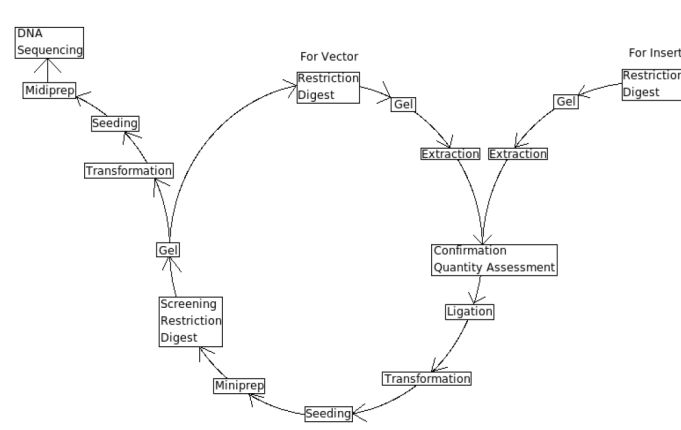Team:Montreal/Notebook
From 2008.igem.org
| Home | The Team | The Project | Parts | Notebook | Links |
|---|
Lab Protocols

|
Key Elements of the Central Dogma of cloning
5. Ligation
8. DNA Extraction: Mini-, Midi-, Maxiprep
Lab Progress
Modelling
The Mathematica notebook used to model the repressillator incorporates xCellerator to create the differential equations representing the chemical reactions at play. The system was then solved using NDSolve, a standard numerical solver in Mathematica -- which is, however, unable to deal with delay equations. Hence, the equations were not evaluated at retarded times at first.
The first solution found was to add null cells in the network. The nulls cells, or pseudo cells, are just grid point where no internal cell reaction occurs, but only diffusion to the next grid point. However, the results depended to heavily on the number of such null cells and, as we did not have a mean of estimating what would be realisitc, did not seem reliable enough.
Now, NDelayDSolve replaces NDSolve to solve the system and we are therefore able to evaluated our equations at retarded times. We are not using null cells anymore.
 "
"

